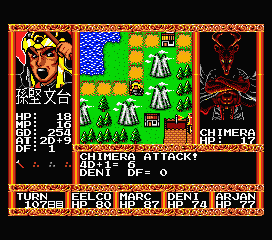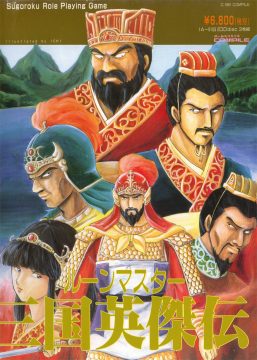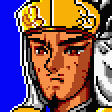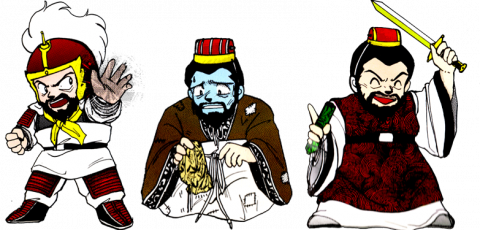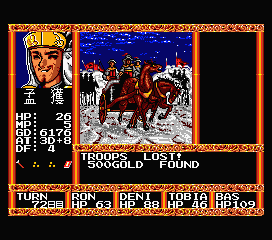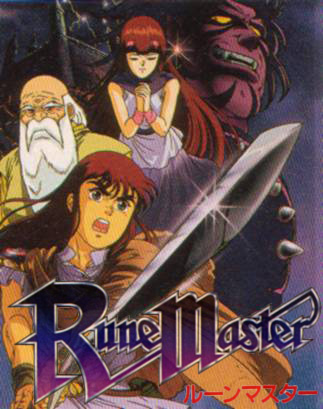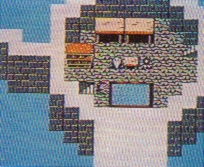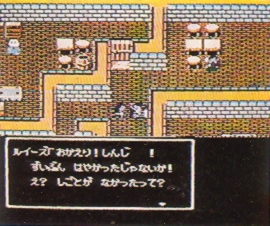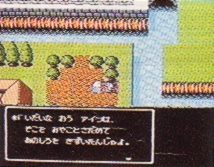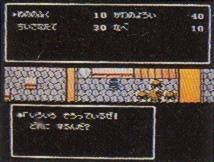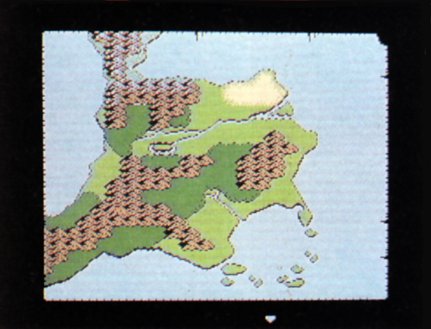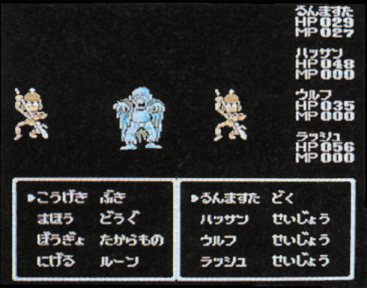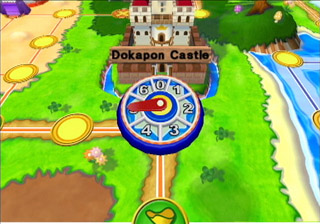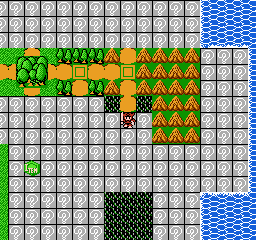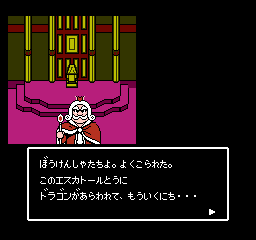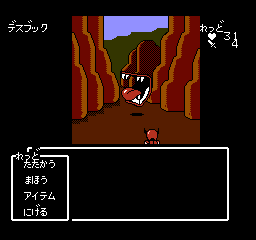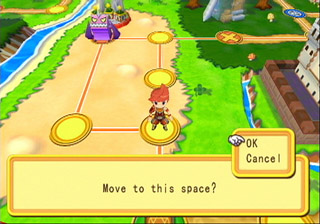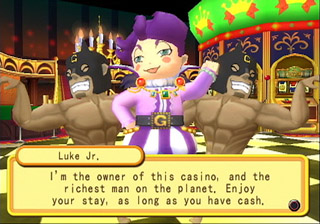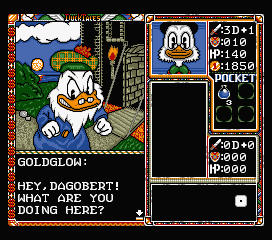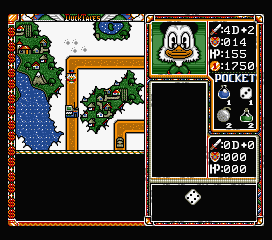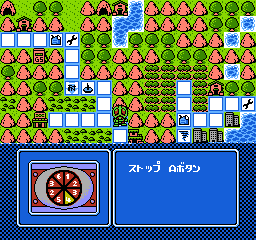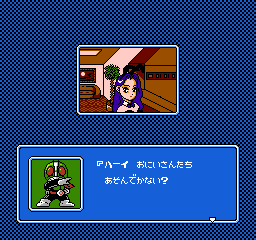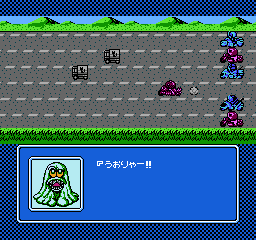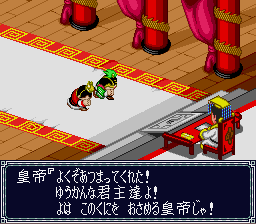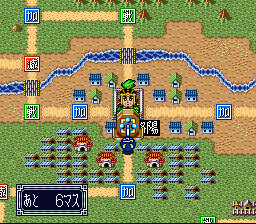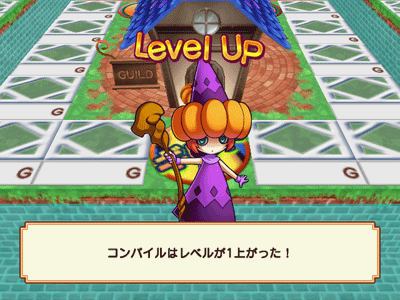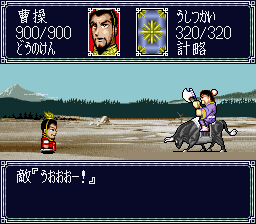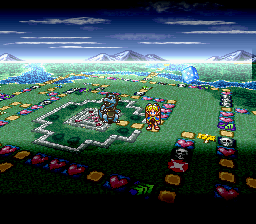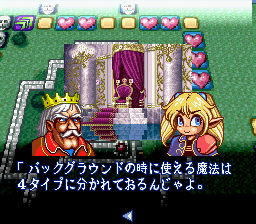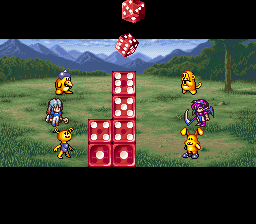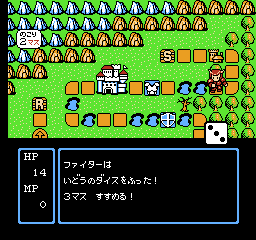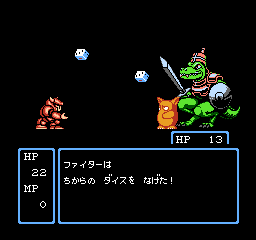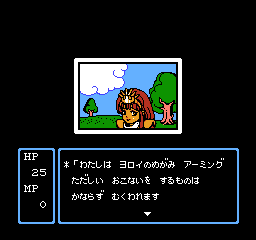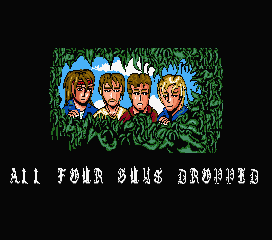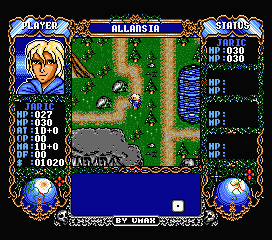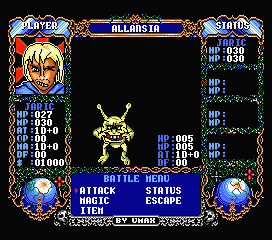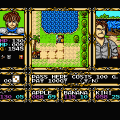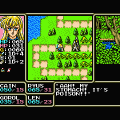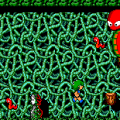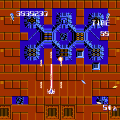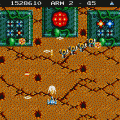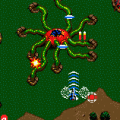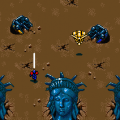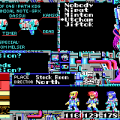- Rune Master
- Rune Master II
- Rune Master III
Compile wasn’t entirely done with the Rune Master series just yet, but their next game would take the game into a somewhat different direction. Rune Master III: War Among Three Kingdoms is a huge departure in many ways from the system laid down in Rune Master II. As the title suggests, the story now takes place in ancient China during the Three Kingdoms era, which has been popularized in video games by Koei’s Romance of the Three Kingdoms and Dynasty Warriors. All these games are based on the historical novel by Luo Guanzhong.
The game now consists of three disks, which are connected through a continued storyline. Each of the disks represent a certain era of the war, and the cast of characters to choose from changes depending on the chapter. All the characters are based on the real historical figures from this often told saga.
Yellow Turban Rebellion
The Yellow Turban Rebellion was a 184 AD peasant rebellion against Emperor Ling of Han. It is named for the color of the scarves which the rebels wore about their heads.
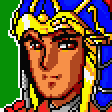
Liu Bei
Widely known as the ideal benevolent, humane ruler who cared for his people and selected good advisors for his government.
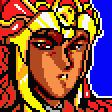
Cao Cao
Although often portrayed as a cruel and merciless tyrant, Cao has also been praised as a brilliant ruler and military genius who treated his subordinates like his family.
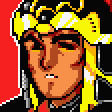
Sun Jian
Although he controlled neither many troops nor much land, Sun Jian’s personal bravery and resourcefulness were feared by many.
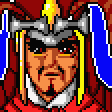
Yuan Shao
One of the most powerful warlords of his time, Yuan Shao spearheaded a coalition of warlords against the tyrannical Dong Zhuo.
Rise of Shu Kingdom
One of the Three Kingdoms competing for control of China after the fall of the Han Dynasty, based on areas around Sichuan which was then known as Shu.
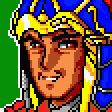
Liu Bei
Liu Bei returns in this chapter.
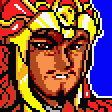
Cao Cao
Cao Cao also moves over from the Yellow Turban Rebellion chapter.
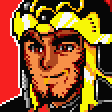
Sun Quan
Because of his skill in gathering important, honorable men to his cause, Sun Quan was able to delegate authority to capable figures. This primary strength served him well in gaining the support of the common people and surrounding himself with capable generals.
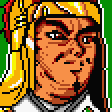
Zhang Lu
The third leader of the Celestial Masters, a religious group.
Tripartite Confrontation of the Three Kingdoms
The tripartite confrontation was formed in the 20s of the 2nd century. In 220, Cao Cao’s son Cao Pi deposed Emperor Xian and ended the Han Dynasty.
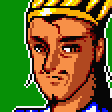
Zhuge Liang
He is often recognised as the greatest and most accomplished strategist of his era.

Sun Quan
Another carry-over from the previous chapter.
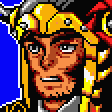
Yong Kai
An officer of the Three Kingdoms Period that was the prefect of Jian Ning, later joined the Nanman King, Meng Huo through revolting against Shu.
In this game, the choice of character makes a lot of difference on the adventure. There are now many stats such as wisdom, luck, reputation and power. Reputation is especially important. Along the road you meet warriors whom you can ask to join your army. Depending on your reputation and the potential warrior’s stats, he will accept or refuse. This is how you grow on strength overall in the game. While you still have towns with shops that sell weapons, they mostly add bonus points only, and extra dices are generated according to how many warriors you command and their individual skill level, along with the defense stats. This adds an element of strategy to the game that was not found in the earlier games.
While the first 2 games had horrendous AI when it came to your rivals, they are now the complete opposite. Right from the get go these guys know exactly what to do and will most likely leave you in the dust only to watch them slay half of China and take down the bosses one by one while you’re stuck fighting mutated fungus. It gets to the point where your only real option is to control all 4 characters in order to see and experience the whole game.
The shop aspect has been downgraded, too. The elders are gone and the shops are rather limited. The inn still acts as a place for health refill, but HP is no longer increased by purchase. As mentioned, the weapons don’t make much of an impact on your power stats and the armor store was completely removed because this time around, your stats are mostly defined by the strength of your party members, which can be picked up along the way through the various events that take place.
They didn’t get rid of gambling, though. In Rune Master II we had the chance to bet on turtles crawling at 0.005 mph and wait in excitement to see if you would get showered with the price money. But this is ancient China, surely they wouldn’t sit around and watch turtles race each other while dressing them up with polka dots and ribbons, so instead you watch monkeys climbing trees.
There’s more of a direct rivalry in this game compared to the others because you can now wreck havoc onto the other players. In the shop you will find items such as scrolls and books, which send a random curse to any character you may please. This can be anything from instant death to incredibly tough enemies. But because of the aggressive AI, you’ll probably be on the receiving end of those, too.
The game is filled with events, so many in fact that it seems every square will make something happen. Hermits beg for money, warriors join your party, ambushes drain your HP or peasants ask for assistance slaying wild tigers. It makes the game such a time consuming effort that one disk will probably take you an hour or so to beat. It’s also tiring to see the same events happen again and again.
Graphically and musically the game blows the other ones out of the water, though. The colors are very warm and suiting to the locations and characters, while the music creates a great atmosphere with fitting melodies and a distinct Chinese flair.
The translation isn’t complete and the game runs extremely buggy in the English patched version. One can immediately tell that a lot of dialogue has been cut, because some of the events make no sense whatsoever and more often than not there’ll still be traces of kanji in the dialogue. On the second disk, the patch makes it so you instantly get 9999 gold per enemy, and they are all killed in one hit, making that disk the easiest game of all time. However during the last part of disk 2, the game freezes at a boss because of some characters in his name apparently, rendering the disk broken and impossible to beat. The patch was made in 1993, in a time when fan translation was at its toddler stage, so it’s understandable it has some rough corners. Hopefully another group will one day redo the work and give us a more comfortable ride with this game. In total there are 12 endings to the game, an individual conclusion for each character per disk. The endings play even if the CPU wins the game.
It’s a big game, there’s no denying of that. But just like when you play a real board game, it’s more of a wish for a more instant and short term experience than an multiple day affair. The problem that this game has is that the length makes it so tedious. You’ve seen it all before, the battles become the same and the locations look the same. The events pop up so frequently and they never offer much change either. While Rune Master II was certainly longer than its predecessor, the length was extended more with the different routes and various short side quests that added replay value and depths, whereas here it just goes on and on and on. For fans of Romance of the Three Kingdoms, I’m sure this game offers a unique way to experience the story through different time periods, but for fans coming in from the earlier Rune Mastertitles, I’m not so sure if it works too well.
This was the last board game RPG Compile ever made, and their focus shifted to Puyo Puyo after its release in 1991. Other companies were inspired enough to create their own titles in the same style over time however, though it was fairly short lived as the board game style could not compete with the booming JRPG scene throughout the early ’90s.
Rune Master (ルーンマスター) – Famicom (unreleased)
At one point there was a Rune Master game planned for the Famicom, but for unknown reasons it was cancelled. This game was to be published by Bandai and doesn’t seem to have anything but name in common with the MSX2 series.
The game revolves around the main character trying to save his little sister who is sick, and he goes out to earn the money to cure her. The game is explained in some Japanese articles as an “Anti-Dragon Quest” because it focused more on an emotional story rather than knights seeking out the evil king and saving the kingdom.
The team working on this game was quite extensive and prolific. Yuji Horii (Dragon Quest) served as the supervisor, Hiroshi Miyaoka (Metal Max) directed, Shinji Hashimoto (Front Mission) produced and Hiroshi Haginome (Famicom Jump) was the designer.
Similar Games
The Rune Master games were a minor success for Compile, with the 3rd game gaining a small cult following in Japan shortly after its release. A number of other developers tried their hands in bringing the excitement and unpredictable nature of the roll of a dice into the video game world. In Japan these titles were mostly original and properly planned, while the Western side of things seemed to try and cash in on Rune Master‘s popularity with some rather strange titles to varying degrees of quality. The Dutch company Sunrise published a slew few of these titles, with the most well known being Witch’s Revenge. While the game itself is rather large and its mechanics are functional, the art style and direction is absolutely atrocious to the point that it affects the game negatively. Another Dutch unit named Emphasys developed an unlicensed DuckTales game using the dice RPG system. This game takes place on 4 separate boards leading to Magica De Spell’s castle for a final showdown. Due to it being unlicensed, it takes some liberties with the source material, specifically in the language department where certain crude statements are given.
One of the most famous Japanese dice RPG aside from Rune Master is Sugoro Quest: Dice No Senshitachi, or Dice Warriors in English, released in 1991. Developed by Technos Japan, who are well known for their Double Dragon and Kunio-Kun series, Sugoro Quest takes place in the world of Siland, where monsters are wrecking havoc on the once peaceful land. In order to stop the beasts from taking over, the king sends out 4 dice warriors to travel through the land and take care of the invading monster threat. Sugoro Quest plays very similarly to Rune Master, though aims at a bit deeper customization to live up to other RPG’s on the market at the time such as Final Fantasy. The game was successful enough to warrant a sequel on the Super Famicom titled Sugoro Quest PlusPlus Dicenics in 1994. The original Famicom game eventually got a fan translation patch done by Alan Midas. The Super Famicom game is yet to be translated. In 2008, Compile Heart published a new title in the Sugoro Quest franchise for the Wii, titled Sugoro Chronicle: Migite ni Ken o Hidarite ni Saikoro o.
Another minor known dice based RPG is Hyaku no Sekai no Monogatari on the Famicom, which also recieved a fan translation treatment from Alan Midas under the title 100 World Story. Like Sugoro Quest, 100 World Story again attempts to deepen the gameplay with more magic and customization of characters. Unlike the other dice RPG’s, there is now a set amount of rounds and several ways to beat the game through either slaying the king dragon, finding the mystical treasure, saving the princess or acquiring the most points. Though board game style video games still exist in the form of party games such as Mario Party, only one title seems to have made use of it in a role playing context in recent times. Dokapon Kingdom by Sting uses the setting of the Dokapon games, known in the West as Monster Hunter, in a board game setting with proper RPG elements, though plays more like a loose evolution of the style rather than taking its inspiration from the short lived genre.
